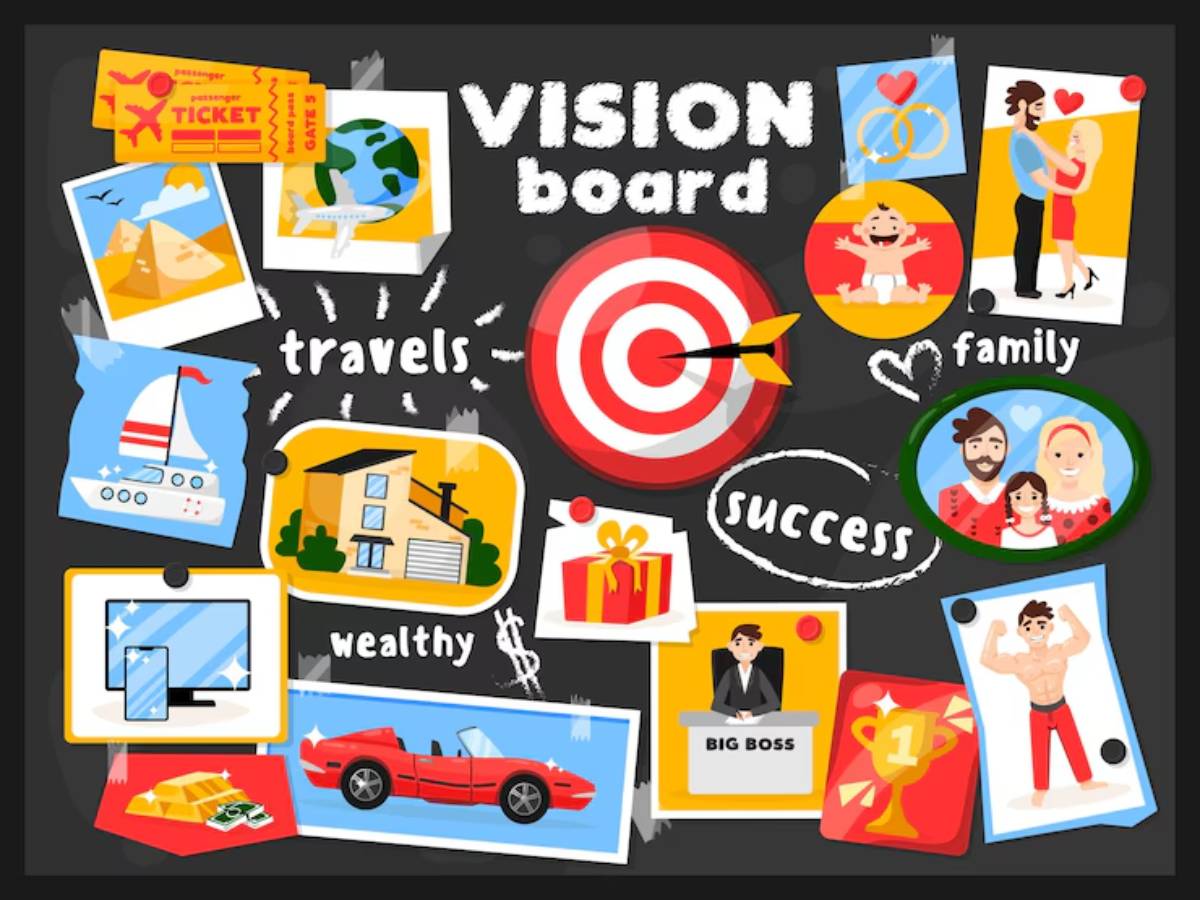
Retirement Vision Boards: Planning a Fulfilling Future
Retirement used to be painted in one colour—grey. Grey hair, grey suits gone, grey rocking chairs on grey porches. But let’s be honest, that picture’s long outdated.
Retirement today? It’s vivid, varied, and full of personal definition. Some dream of beach towns, others crave mountain solitude, while many are eager to launch second-act careers, mentor younger minds, or finally master sourdough. Whatever it looks like, retirement visualisation is where it all begins.
And that’s exactly where a retirement vision board comes in.
This isn’t just about flipping through travel magazines and pasting on a picture of Tuscany. It’s about crafting a visual plan that feels grounded, joyful, and true to your future self. It’s your retirement dreams planner—a tool not for fantasy, but for clarity.
Let’s talk about how to create a future lifestyle board that maps not just what you’ll do, but who you’ll be—and how it’ll feel when you finally have time that’s fully yours.
Why Vision Boards Matter for Retirement
In your career years, goals were often tied to deadlines, performance reviews, promotions, and practical planning. Now, the timeline is wide open. That’s exciting—and slightly terrifying, right?
Without structure, it’s easy to lose direction. Vision boards provide:
- Clarity: What do you really want out of the next chapter?
- Focus: How do you want to spend your time, energy, and money?
- Inspiration: What gets you excited about waking up every morning?
- Reinforcement: Seeing your dreams daily keeps them top of mind
More than anything, a board says: “This life is mine to design now.”
Step One: Reflect Before You Pin or Paste
Before diving into Canva or cutting up magazines, take a pause.
Ask:
- What does a perfect weekday look like after retirement?
- What are the feelings I want more of—freedom, purpose, creativity?
- What have I postponed, and what am I ready to pursue?
- How do I want my relationships to evolve in this next phase?
This isn’t a productivity exercise. It’s personal insight.
What to Include on Your Retirement Vision Board
The beauty of a future lifestyle board is that it covers everything—from routines to dream vacations to quiet inner peace. Consider dividing your board into these themes.
1. Health & Vitality
Not just staying alive, but thriving.
Use:
- Photos of active movement (yoga, walking trails, dance)
- Visuals of nourishing meals or garden-grown food
- Words like “Strength,” “Ease,” “Longevity”
Think energy and well-being, not just gym memberships.
2. Home & Environment
What does your ideal living space feel like?
Include:
- Images of cosy reading corners, minimalist kitchens, or mountain cabins
- Outdoor dreams like porches, gardens, or ocean views
- Downsizing or RV lifestyle symbols if that’s the plan
Your space supports your peace.
3. Passions & Play
This is the fun section.
Try:
- Photos of musical instruments, travel, art, and cooking
- Hints of hobbies you’ve never had time to try
- Adventures near or far (that yoga retreat in Bali? Yes.)
You’ve worked hard—this is your joy chapter.
4. Relationships & Community
Want deeper friendships? Time with grandkids? A supportive neighbourhood?
Add:
- Images of group dinners, smiling faces, or handwritten letters
- Quotes about connection and togetherness
- Symbols of how you want to love and be loved
5. Purpose & Contribution
Retirement doesn’t mean the end of impact.
Include:
- Mentoring or volunteer work
- Spiritual or faith-based growth
- Creative legacy (a book, a memoir, art)
This part of your board anchors you beyond day-to-day pleasures.
Choosing a Format for Your Retirement Dreams Planner
Your lifestyle might be more relaxed—or more mobile—so choose a format that fits naturally.
Traditional Poster Board
Big, tactile, and great for hanging in your workspace or bedroom.
Digital (Canva or Pinterest)
Easy to update, replicate, and view on the go. Perfect if you’re tech-savvy or minimalist. Not sure how to get started? Using Pinterest & Canva for Vision Board Design walks through it step-by-step.
Vision Binder or Notebook
Prefer to journal? Print out photos and create a more layered board with reflections, updates, and evolving dreams.
Create Your Board
1. Set the Mood
Put on music. Brew tea. Light a candle. This is more ritual than chore.
2. Gather Materials

If physical:
- Magazines, printouts, scissors, glue, pens If digital:
- Screenshots, free image sites, templates, and inspiration boards
3. Start Curating
Pull images and phrases that spark a smile, a sigh, a memory, or a craving. Don’t overthink it—follow the pull.
4. Assemble with Emotion
Group themes together. Centre your board around your biggest “why.” Balance between aspirational and peaceful.
This is not a to-do list. It’s a feeling map.
Bringing Your Vision to Life
You’ve built the board. Now what?
Make It Visible
Print it, frame it, set it as your desktop background. Let it gently whisper to you daily.
Journal with It Monthly

Ask:
- What’s already showing up in my life?
- What needs nurturing?
- What’s shifted in importance?
Create Micro-Actions
If there’s a kayak on your board, start researching rentals nearby. If there’s a photo of Italy, open a travel savings account. Little steps compound.
Share It
Open up to your partner, family, or friends. A shared vision invites support and momentum.
Common Vision Board Mistakes to Avoid
Mistake 1: Filling It with Generic Goals
“Travel more” is vague. What does your dream travel look like? Paris cafés or hiking in Patagonia?
Mistake 2: Trying to Predict Everything
Leave space for surprise. Your board should feel like an invitation, not a rigid plan.
Mistake 3: Keeping It Too Private
While it’s okay to be personal, consider letting trusted loved ones in. Vision shared is vision multiplied.
Creative Twists for Retirement Boards
Want to go beyond the standard layout? Try these:
“Chapter Themes”
Create zones for early retirement, mid-retirement, and your legacy years. This gives structure to evolving dreams.
“Retirement Bucket List”
Add a checklist-style section you can mark as you go.
“Then & Now” Panel
Include a small section reflecting your younger dreams—and how you’re honouring them now in wiser ways.
A Note on Revisiting the Board
Life post-retirement still shifts. Health changes. Interests evolve. Unexpected joys pop up.
That’s why a retirement dreams planner isn’t a one-time creation. Make it a yearly ritual. Refresh. Celebrate. Adjust.
And remember: fulfilment isn’t about crossing off every dream. It’s about living aligned with what matters.
For more on turning dreams into visual form, peek at Creative Personality Vision Boards: Going Beyond the Norm.
Designing a Life Worth Waking Up To
A retirement visualisation board isn’t just pretty pictures on a poster or pixels on a screen. It’s an act of hope. A declaration that your life—yes, even now—is still bursting with potential.
Retirement isn’t a finish line. It’s an open field.
This board is your walking stick, your compass, your sky map.
Use it to dream. Use it to plan. Use it to remember who you are—at every age, and in every chapter still to come.


